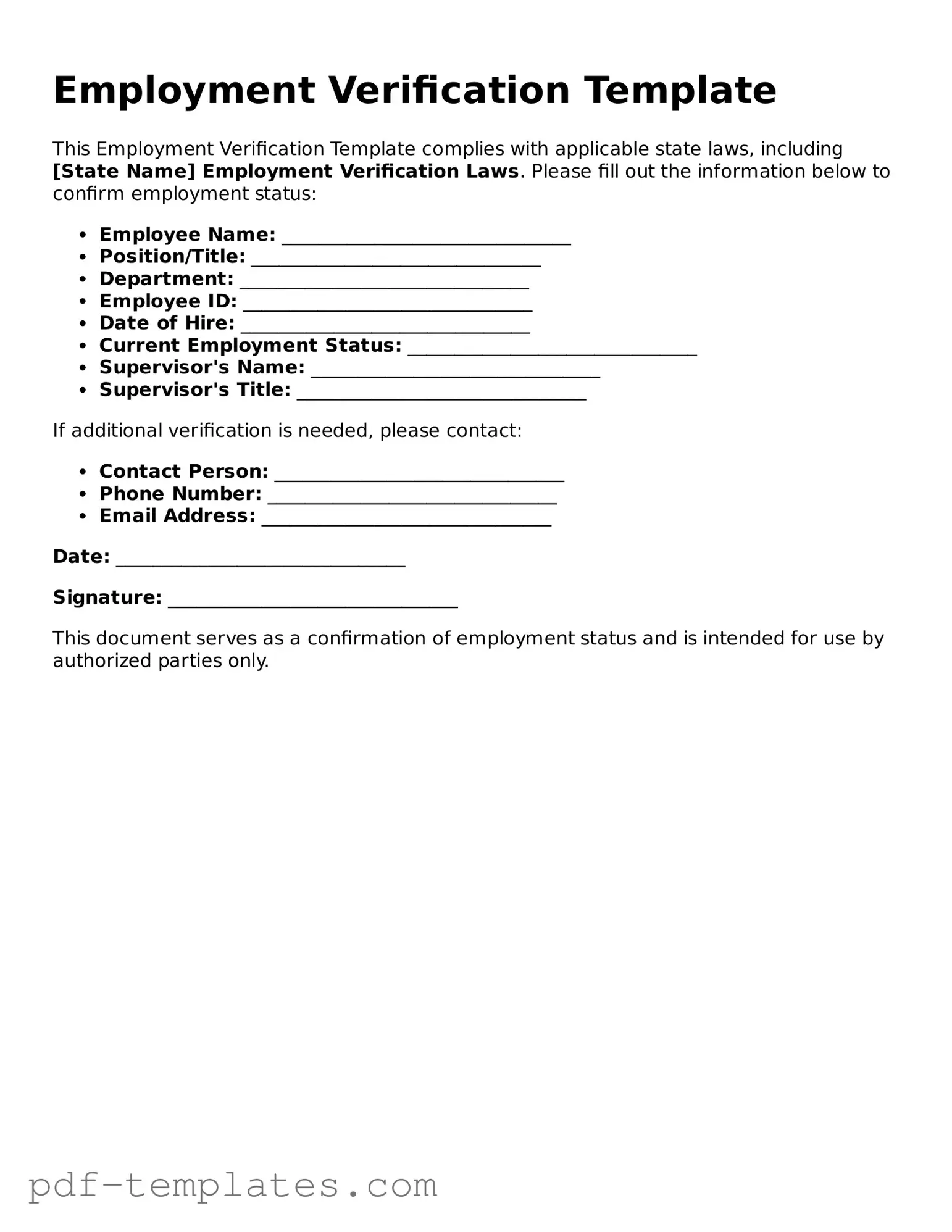The Income Verification form serves a similar purpose to the Employment Verification form by confirming an individual's earnings. Typically requested by lenders or landlords, this document provides essential details about a person's salary, bonuses, and other forms of compensation. Just as the Employment Verification form outlines employment status and duration, the Income Verification form details the financial aspects of a person's job, ensuring that the information presented is accurate and reliable.
The Job Offer Letter is another document that aligns closely with the Employment Verification form. This letter is issued by an employer to a candidate who has been selected for a position. It includes details such as job title, salary, and start date. While the Employment Verification form confirms current employment, the Job Offer Letter serves as proof of a future employment commitment, providing a foundation for the individual’s professional journey.
The Pay Stub, or paycheck, is also comparable to the Employment Verification form. A pay stub provides a breakdown of an employee's earnings for a specific pay period, including hours worked, deductions, and net pay. This document acts as tangible proof of income and employment, similar to the Employment Verification form, which verifies that an individual is currently employed and receiving compensation for their work.
The Tax Return, particularly the W-2 form, shares similarities with the Employment Verification form as well. The W-2 form is provided by employers to report an employee's annual wages and the taxes withheld. It serves as a record of employment and income over the past year, much like the Employment Verification form, which may be used to validate an individual's current employment status and income level.
Lastly, the Reference Letter can be seen as a document akin to the Employment Verification form. While the Employment Verification form primarily focuses on job details, a Reference Letter provides a broader perspective on an individual's work ethic, skills, and character. Often requested during job applications, it complements the Employment Verification form by offering insights from previous employers or colleagues, thereby enhancing the applicant's credibility and professional reputation.
